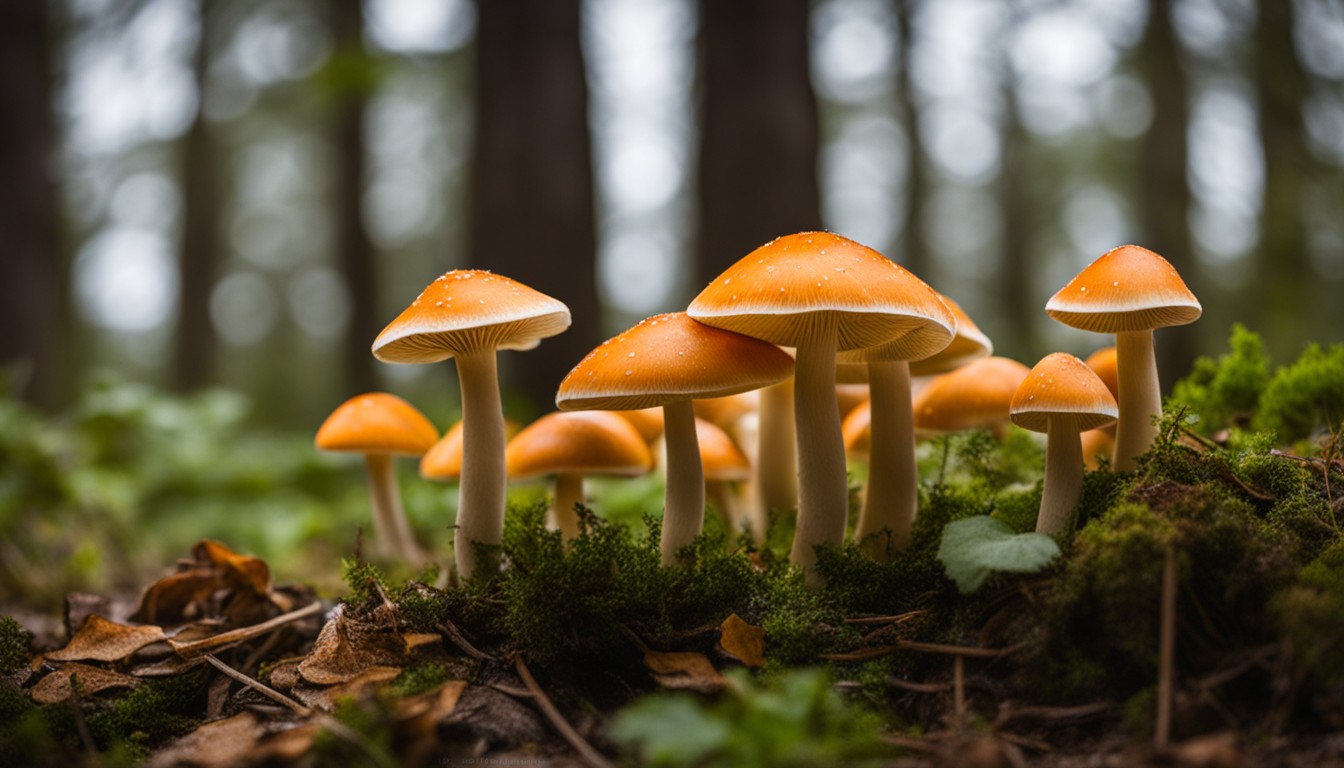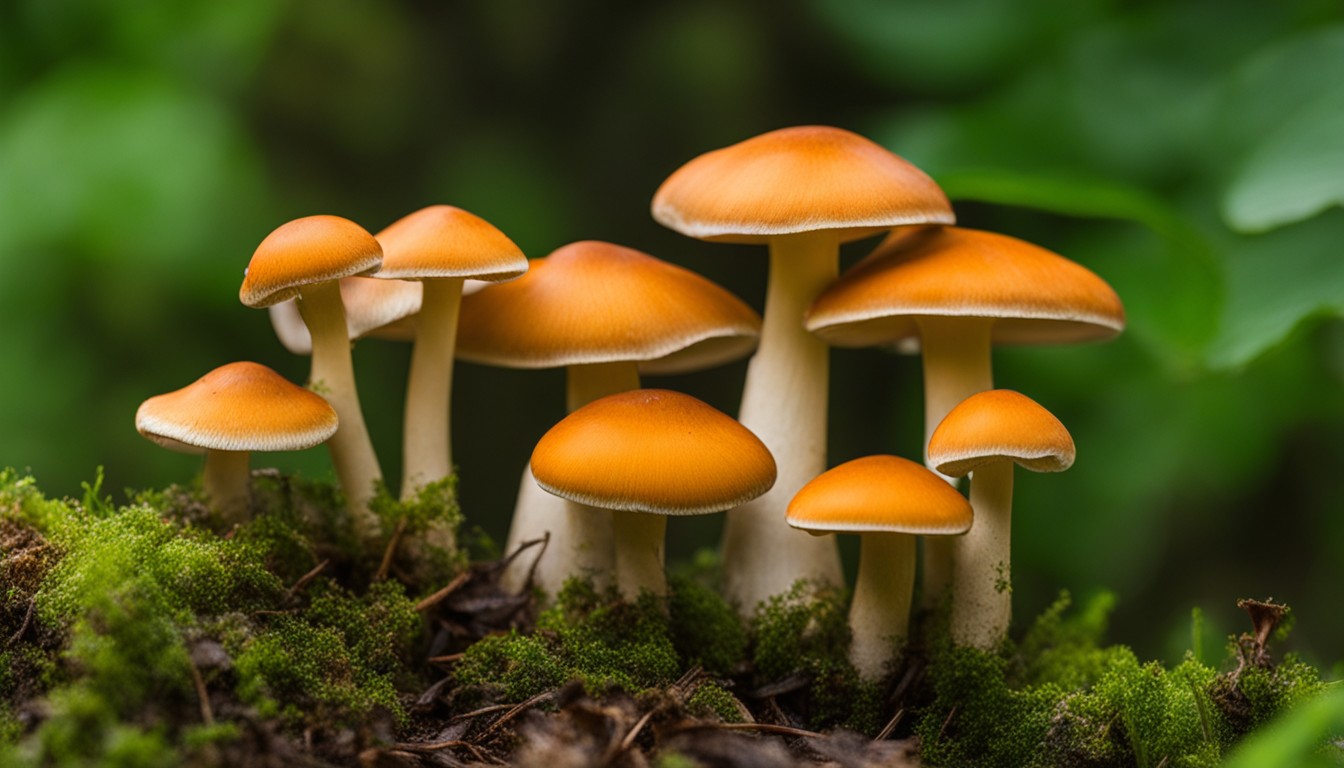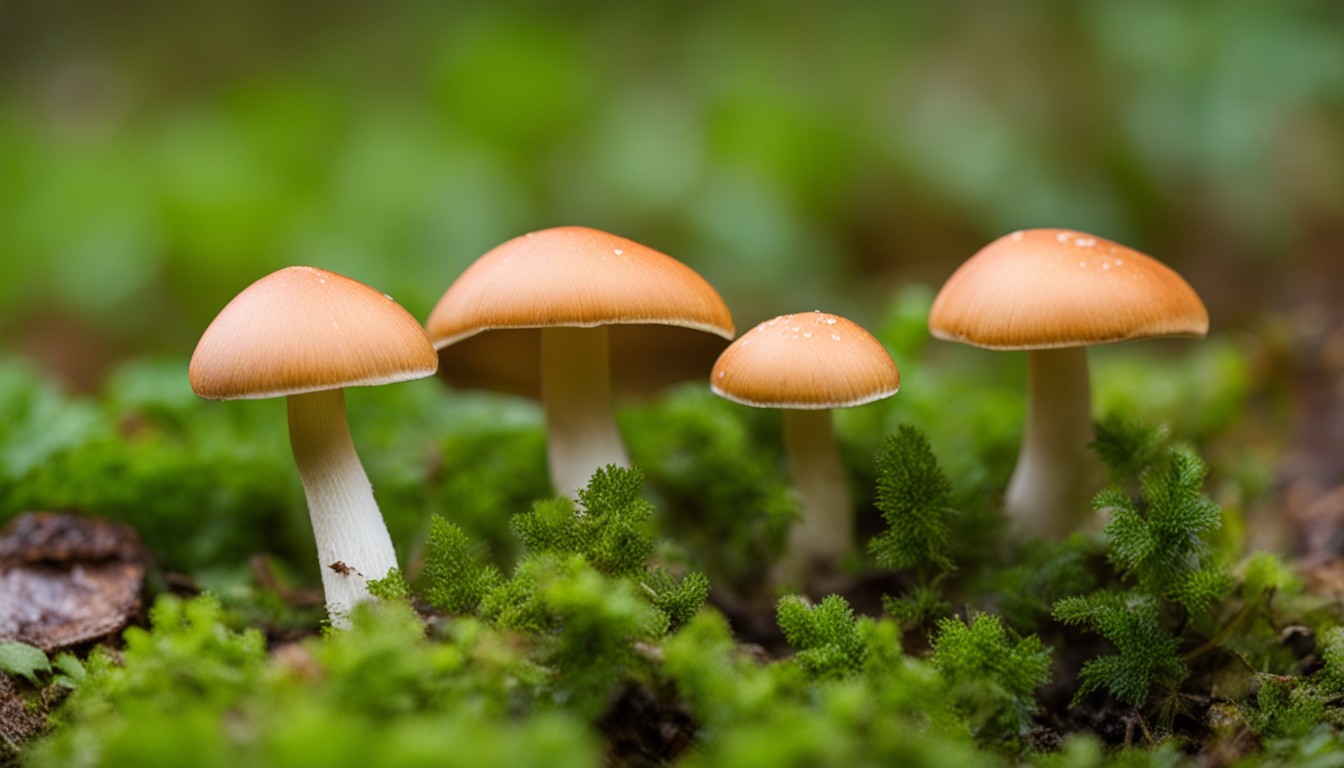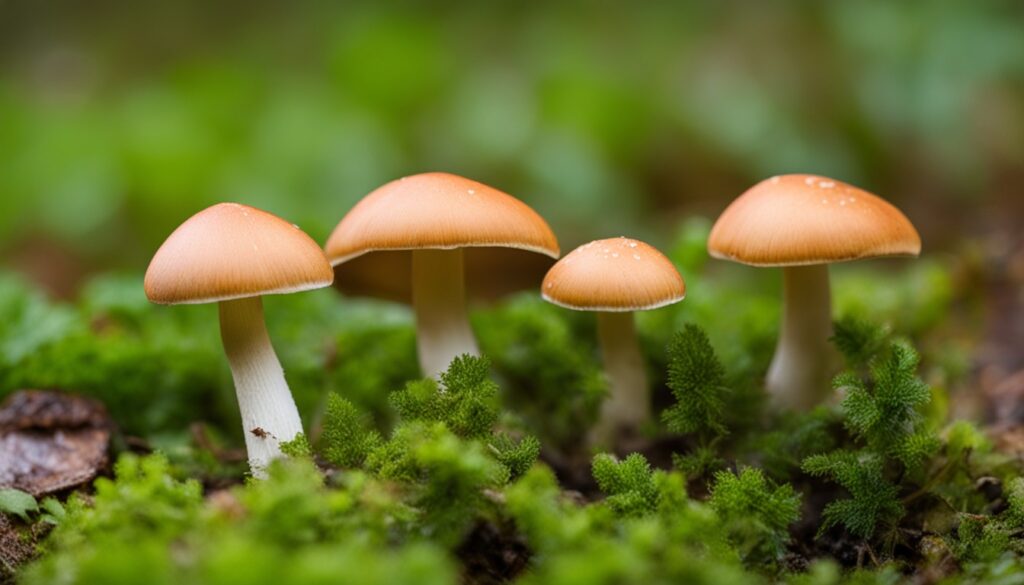Mushroom cultivation can be a rewarding and fascinating hobby, but it can also be frustrating when your mushrooms don’t fruit as expected. If you’re facing this issue, it’s essential to understand the possible reasons behind it. Factors such as improper environmental conditions, inadequate substrate preparation, or infection can contribute to the lack of fruiting. By delving into these factors and implementing appropriate measures, you can increase your chances of a successful mushroom harvest. So, don’t get discouraged if your mushrooms aren’t fruiting – with the right knowledge and adjustments, you can achieve the bountiful harvest you’ve been hoping for.
Common Reasons for Mushroom Fruiting failure
The art of cultivating mushrooms requires a balance of critical factors. Failure to bear fruit often results from uncompromising conditions such as inadequate lighting, moisture deficiency, improper nutrient balance, ill-suited temperature, negligent air circulation, contaminated spawn or substrate, overcrowding, and pest or disease infestation.
Mastering mushroom cultivation necessitates a harmonious blend of lighting, moisture, nutrition, temperature, air circulation, spawn cleanliness, spacing, and pest control.
Decoding the cause behind your mushroom’s lack of fruiting can appear puzzling. An understanding of the factors leading to such failure can provide the much-needed clarity. Inadequate growing conditions or the presence of genetic elements can significantly impact your mushroom’s fruiting potential.
Lack of Proper Growing Conditions
Inadequate growing conditions play a pivotal role in the failure of mushroom fruiting. Neglecting basic growth requirements often results in mushrooms not maturing into a fruiting body.
- Ensure mushrooms have the right growing medium
- Regularly monitor and adjust environmental conditions
- Understand the specific needs of the mushroom variety
- Avoid drastic changes in growing conditions
Insufficient Moisture Levels
Insufficient moisture levels can drastically hinder the fruiting process of mushrooms. Achieving optimal hydration balance is vital as mushrooms, consisting primarily of water, rely heavily on moisture for growth and fruiting.
- Appropriate watering schedule
- Fogging or misting techniques
- Hydroponic or humidifier systems
- Examination of substrate moisture
- Use of damp substrates
- Timely harvesting to prevent drying
Inadequate Lighting
Proper lighting plays an integral role in mushroom fruiting, and inadequate conditions can hinder their growth. It’s essential to gauge the illumination demands of your chosen mushroom variety, as each species has different light requirements.
- Understand the specific light requirements for the mushroom species you are growing.
- Provide consistent but indirect light, as direct sunlight can dry out your mushrooms.
- Adjust the duration of light exposure based on the mushroom variety.
- Use artificial lights if natural light is not adequate or consistent.
- Regularly monitor light conditions and make adjustments as necessary.
Poor Air Circulation
Air circulation plays a pivotal role in mushroom fruiting, serving as the ‘breath of life’ for these fascinating fungi. It aids in maintaining humidity, moderating temperature, and distributing essential gases for mushroom development. Unfortunately, poor air flow stunts this growth process, leading to stagnation vs. fruitful growth.
- Assists in regulating the mushroom’s microclimate.
- Enables distribution of beneficial gases.
- Moderates temperature to prevent overheating.
- Maintains desirable humidity levels.
- Poor air flow might lead to stagnant growth and fruiting failure.
Incorrect Temperature
Temperature plays a pivotal role in successful mushroom fruiting. Typical mushroom species thrive well within a temperature range of 18-24°C (64-75°F). Temperatures outside this range can significantly hamper the growth and fruiting of mushrooms. Hence, it’s essential for growers to detect and rectify unfavorable temperature conditions promptly.
- – Preparing a properly insulated growing environment to maintain stable temperatures
- – Regularly monitoring temperature using a reliable and accurate thermometer
- – Using heating or cooling systems to rectify unfavorable temperature conditions
- – Selecting mushroom species that are well-adapted to the existing environmental temperatures
Improper Nutrient Balance
Ensuring optimum mushroom fruiting requires maintaining the right nutrient balance. The type and amount of nutrients present in the substrate can significantly impact the development of fruiting bodies.
A nutrient imbalance can negatively affect mushroom growth. Excessive nitrogen, for instance, might trigger rapid mycelial growth but stifle fruiting.
If essential nutrients are deficient, the mushroom mycelium may not form fruit bodies at all. This highlights the necessity of utilizing a substrate imbued with a balanced nutrient mix.
It’s crucial to continuously make sure your nutrient ratios are balanced for your specific mushroom variety. Different mushroom strains have different nutrient needs, so it’s important to adjust accordingly.
Contaminated Spawn or Substrate
Contamination in spawn or substrate can critically impair mushroom fruiting. Harmful bacteria or mold compete with the mushroom for nutrients, limiting its growth and ability to fruit.
Signs of contamination can include foul smells, discoloration, or slowed growth. Spotting these signs early is crucial to saving a compromised crop.
Addressing spawn or substrate contamination involves removing the affected sections and sterilizing the growing area. To prevent future contaminations, maintain a clean, well-sanitized growing environment.
Overcrowding of Mushrooms

Overcrowding is a common obstacle in mushroom cultivation, which can hinder their fruiting process. It compromises the exposure to light, airflow, and nutrient absorption, resulting in suboptimal growth. Hence, proper plant spacing is integral to successful mushroom fruiting.
When mushrooms rub shoulders, their moisture levels increase, posing a risk of bacterial and fungal diseases. Further, mushrooms need room to grow and develop. Overcrowding often leads to underdeveloped, frail, and poor-quality fruit.
Regulating mushroom spacing is pivotal for boosted fruiting. Ample space allows adequate light penetration, promotes air circulation and ensures even nutrient access. It fosters a healthy and conducive growing environment, resulting in a higher yield and quality of mushrooms.
Lastly, consider the mushroom species’ growth pattern. Some species naturally grow in clusters, while others demand more space. Adapting the spacing accordingly will greatly enhance the fruiting success and help cultivate a fruitful batch of mushroom.
Pest or Disease Infestation
Pests and diseases act as invisible enemies that can hinder mushroom fruiting. Predatory insects, molds, or bacteria can all negatively impact your mushroom cultivation, causing fruiting failures.
Frequent inspections offer the first line of defense. Regularly check your mushrooms and growing areas for signs of infestation or disease.
Having a prevention strategy is crucial. This could include maintaining proper cleanliness, using disease-resistant strains, or applying organic pest controls.
In the event of an infestation or disease outbreak, act promptly. Segregate affected mushrooms or batches to prevent spreading and apply treatments as necessary. Remember, time is of the essence.
Genetic Factors
Genetic factors play an indispensable role in mushroom fruiting. Various mushroom species’ genetic makeup affects their growth, development, and fruiting cycle, leading to differences in yield and productivity.
The genetics of a mushroom variety largely determine their fruiting characteristics—size, shape, color, and overall yield. This unalterable genetic blueprint because of this, it’s critical to begin with a reliable, high-yielding mushroom strain for productive cultivation.
Exploring genetic variables helps open the doors to understanding why some mushroom species may struggle to fruit. In some cases, a varietal characteristic could hinder successful fruiting, regardless of your efforts in providing optimal growth conditions.
Unlocking the secrets of genetics allows for improved cultivation practices. By understanding the underlying genetic reasons for failed fruiting, cultivators can make informed decisions about mushroom variety choice, subsequently enhancing yield and output.
Troubleshooting Tips for Mushroom Fruiting Problems

Diving into mushroom cultivation, one can encounter numerous fruiting issues. Adopting a conscientious approach to troubleshooting, you can effectively remedy these problems. Guided by practical experience and scientific principles, the goal is to provide optimal conditions ensuring successful mushroom fruiting.
The endeavor to grow mushrooms can be met with a smorgasbord of challenges, but a comprehensive guide to troubleshooting can offer invaluable solutions. As you navigate through the intricacies of this endeavor, implementing facile alterations to your growing conditions can dramatically improve your chances of a successful mushroom harvest.
Adjusting Growing Conditions
To ensure maximum mushroom fruiting, it’s crucial to revisit your growth setup. This includes the substrate used, the type of container or growing system, and its layout. A slight adjustment in these aspects can dramatically increase fruiting success.
Fruiting frustrations can often be cured by tweaking your growing environment. Consider changes such as varying the substrate’s pH, adjusting the room’s humidity, or altering the frequency of air exchanges. Even a subtle shift could be the key to greater yields.
Maintaining Optimal Moisture Levels
Achieving optimum mushroom fruiting hinges upon your ability to balance moisture impeccably. Too dry, and your mushrooms stall; too damp, and they become susceptible to contaminants. Your goal must be a harmonious state of hydration that encourages bountiful fruiting.
Appropriate moisture levels are vital, and dialing in the damp is a major part of mushroom cultivation success. Handling this delicate balancing act ensures the right environment for mushroom fruiting, fostering growth while thwarting diseases.
Providing Adequate Lighting
Illumination helps stimulate fruiting in mushrooms; however, it isn’t a call for intense brightness. Mushrooms mainly require light to indicate direction of growth rather than for photosynthesis. Therefore, diffused natural light or soft artificial light is generally sufficient.
Adjusting lighting conditions can lead to successful mushroom fruiting. An environment too dim can lead to spindly, elongated fruit bodies as they search for light, while too much light can dry out the substrate and harm the mycelium.
It’s about finding a balance. By exploring the effects of light intensity, duration, and quality on a specific mushroom variety, growers can distinguish the optimal lighting conditions to promote fruiting and thrive.
Improving Air Circulation
Navigating the fine line between too much and too little air circulation can directly impact mushroom fruiting. A stagnant environment promotes bacterial growth, while excessive airflow can dry out your substrates. Finding a precise balance is crucial.
To foster a thriving fungal ecosystem, adequate air circulation is key. This ensures the necessary carbon dioxide-exchange, leading to optimal mushroom growth.
Suboptimal air circulation can lead to poor spore dispersal or increased susceptibility to disease. Regularly checking and adjusting airflows can help to preemptively address these issues.
The significance of air circulation cannot be overstated in mushroom cultivation. Changes, as subtle as a slight increase in fan speed, can make the difference between successful fruiting and loss of yield.
Controlling Temperature
When temperatures stray from the optimal range, mushroom fruiting can be adversely affected. Either extreme, be it overly cold or excessively warm environments, can hinder the maturation process, resulting in low yields or even total failure.
Controlling temperature plays a key role in successful mushroom cultivation. It involves maintaining a precise balance, typically within 55°F-75°F for most varieties, and adjusting this range based on the specific mushroom strain in cultivation, to ensure optimal fruiting conditions.
Balancing Nutrient Content
A crucial factor influencing mushroom fruiting is the balance of nutrients in the substrate. Enough variety assures comprehensive nourishment while imbalance or deficiency can stunt growth and impede blooming. Different mushroom species may require distinct nutrient compositions for optimal fruiting.
Deciphering the nutrient demands of your chosen mushroom variety is paramount. This knowledge helps in building a tailored growth medium. The blend of elements such as carbon, nitrogen, oxygen, and hydrogen, among other trace elements, impacts the fruiting process.
Balancing the nutrient content is an often overlooked yet vital aspect for successful mushroom fruiting. Regularly testing the substrate’s composition supports optimisation, ensuring mushrooms receive all necessary nutrients in the correct proportions.
By mastering the nutrient equation, you not only support robust mycelial growth but also increase the chances of abundant, successful fruiting. However, remember that nutrient balance alone won’t guarantee results if other conditions like moisture, temperature, and lighting are not equally well-managed.
Identifying and Addressing Contamination Issues
Contamination of spawn or substrate can greatly disrupt mushroom fruiting, often leading to failure. Whether fungi, bacteria, or other unwanted organisms, these contaminants compete with your mushrooms for nutrients, preventing healthy growth and fruiting.
Understanding the types of contamination that commonly affect mushrooms is crucial in addressing the issue. Proper sterilization techniques and cleanliness can mitigate most contamination, while quick action is essential when contamination is detected.
Remember that reusing contaminated substrate can result in subsequent unsuccessful fruiting attempts. Dispose of any contaminated material responsibly and replace with fresh substrate to reinstate a thriving environment for your mushrooms.
Proper Mushroom Spacing

Spacing is crucial in mushroom farming; it offers room for growth and encourages successful fruiting. Overcrowding often leads to competition for resources, hindering mushroom development.
Inadequate mushroom spacing can result in a reduction in fruiting due to humidity fluctuations. Overcrowded mushrooms create microclimates with increased moisture levels, which can lead to bacterial and fungal issues.
Predicting accurate spacing is a skill honed by experience, tailored to the specific mushroom species. Proper spacing ushers in optimal growing conditions thus ensuring a successful yield. Cultural practices and careful planning are integral to mushroom farming success.
Implementing Pest and Disease Prevention Measures
Emerging innovations in pest and disease control are leveraging smart methods to guard against unwanted intruders. These can comprise both organic and non-organic solutions compatible with diverse types of mushroom cultivation.
In the face of challenges, effective disease and pest prevention techniques can act as a powerful shield for your crop. An integrated approach, spanning from meticulous hygiene practices to regular inspections, ensures good yield.
Nonetheless, proactive measures are indispensable to mitigate the risk of disease and pest invasions. By staying aware of the evolving landscape of pathogens and pests, maintain the health of your mushroom crop and secure successful fruiting.
Exploring Different Mushroom Varieties
Don’t limit your cultivation to just Button mushrooms, as the edible mushroom varieties available are vast. Each variety has its unique growing requirements and understanding these can significantly enhance fruiting success. Explore options like Shiitake, Oyster, or Cremini and experiment to find which works best in your set up.
Choosing an appropriate variety is key to successful mushroom fruiting. Some strains are more forgiving to inconsistent conditions, while others might not fruit unless the conditions are flawless. By matching your strain to your growing environment, you can essentially increase your fruiting success.
Researching different mushroom varieties before cultivation can help mitigate recurring fruiting issues. Differences in fruiting temperature, lighting, and moisture needs can affect the success of the specific strain you’re growing. Aim to understand your chosen mushroom species and its specific needs before starting.
Bear in mind, each mushroom variety demands a specific substrate. The nutritional content of a substrate may be perfect for one species but completely inadequate for another. Enhancing your substrate recipe to match the requirements of your specific mushroom type may increase the fruiting success.
Experimenting with different mushroom strains gives you the chance to learn and establish diverse cultivation procedures. Each strain will introduce new challenges and solutions, improving your overall skill set. With perseverance and adaptation to different species, mushroom fruiting failures will become less frequent.
FAQ: Mushrooms Not Fruiting? Here’s What You Need to Know
Is your mushroom cultivation not yielding the desired fruiting results? Gain a deeper understanding of the factors that may be impacting your harvest success with these frequently asked questions.
Q: What are some common reasons why mushrooms may not be fruiting?
Improper growing conditions, contamination issues, and pest infestations are often key factors that can hinder mushroom fruiting. Insufficient or excessive humidity, incorrect temperature ranges, inadequate air circulation, and improper substrate composition can all contribute to the lack of fruiting.
Q: How can I ensure proper growing conditions for my mushrooms?
Maintaining the right temperature, humidity, and light levels in your mushroom growing environment is crucial for optimal fruiting. Adequate ventilation and air exchange should also be considered. Installing a hygrometer, thermometer, and grow lights can help monitor and create the ideal conditions for fruiting.
Q: How can contamination affect mushroom fruiting?
Contamination from molds, bacteria, or other fungi can compete with your desired mushroom species and inhibit fruiting. Maintaining cleanliness and practicing proper sterilization techniques can help prevent contamination. It’s essential to sanitize tools and equipment, use clean water and substrate, and ensure proper hygiene during handling and inoculation processes.
Q: What steps can I take to prevent pest infestation in my mushroom grow area?
Implementing pest prevention measures such as regular cleaning, inspecting incoming materials, and using organic pest controls can help safeguard your mushroom cultivation from unwanted critters. Creating physical barriers like screens or nets, keeping the growing area clean and free from debris, and practicing good hygiene can also deter pests.
Q: Are there particular mushroom species more prone to fruiting difficulties?
While fruiting difficulties can occur across various mushroom species, some may be more sensitive to specific growing conditions or susceptible to certain pests and diseases. Research and choose mushroom species that align with your growing capabilities and conditions. Some species, like the shiitake or oyster mushrooms, are known to be adaptable and more forgiving to less-than-ideal conditions.
Q: What should I do if my mushrooms still don’t fruit despite efforts to address potential issues?
If you’ve taken steps to address common issues but your mushrooms still fail to fruit, consulting with experienced cultivators or experts in mycology can provide valuable insights and guidance to troubleshoot further. They may conduct an analysis of your growing setup, suggest adjustments, or recommend alternative cultivation techniques to increase your chances of successful fruiting.
Remember, successful mushroom cultivation requires attention to detail, patience, and a proactive approach in maintaining optimum growing conditions throughout the entire cultivation process. By addressing potential issues promptly and seeking assistance when needed, you can enhance your chances of a bountiful mushroom harvest.
Conclusion
In summary, successful mushroom fruiting hinges on a well-balanced suite of growing conditions. From proper illumination, moisture, and air circulation to temperature control and nutrient balance – everything plays a crucial role.
As a next step in your quest for efficient mushroom cultivation, focus on maintaining optimum environment, identifying and addressing contamination issues, ensuring ideal mushroom spacing, and exploring pest and disease prevention strategies.
- Prioritize the right growing conditions for your specific mushroom species.
- Regularly monitor and adjust moisture, lighting, and temperature.
- Stay vigilant for signs of contamination, pest attack or diseases.
- Maintain an ideal distance between mushrooms to avoid overcrowding.
- Incorporate pest and disease prevention measures.
- Test and vary nutrient content based on mushroom growth responses.
- Consider experimenting with different mushroom varieties to find the one best suited to your growing environment.

